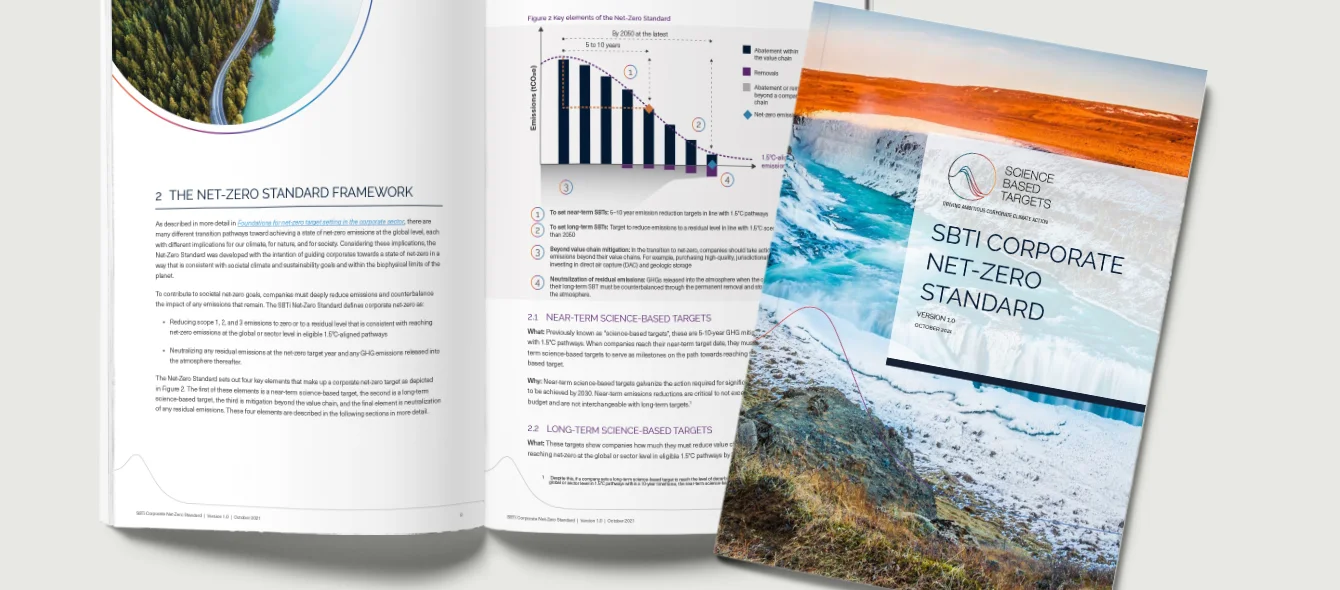An increasing number of companies aim to make their business models and economic activities carbon neutral. By setting net-zero targets, they seek to reduce their greenhouse gas emissions to nil by implementing directed strategies and measures. However, this endeavour previously lacked guidance and models.
“Companies currently set their own net-zero targets,” states Alberto Carrillo Pineda, Co-Founder and Managing Director of the Science Based Targets Initiative“ (SBTi), an independent partnership of renowned organisations including the WWF, UN Global Compact, World Resources Institute and CDP. This is why the SBTi has created a basis for climate protection goals built on science: the Net-Zero Standard, which was published by the Initiative in late October 2021.
Initiative audits and certifies climate protection plans
The basis for the Standard was provided by the Paris Climate Agreement, in which 197 nations agreed at the UN Climate Conference in Paris in December 2015 to limit global warming to significantly under two degrees Celsius – a goal that more and more companies are adopting. To this end, they can set themselves a science-based target (SBT) – a reduction goal that takes account of the state of the art in climate protection.
SBTs specify the requirements that companies must meet in order to be in line with the Paris Climate Agreement. Once this has been accomplished, the Initiative reviews the plans and issues certifications.
Energy giant RWE is among those which have set themselves ambitious targets. The company’s emission reduction goals for 2030 have been certified by the Initiative as being compliant with the climate targets since December 2020.
Indirect emissions must also drop to nil
Reducing greenhouse gas emissions to zero is an extremely complex process. Here, companies must differentiate between direct and indirect emissions, which can be broken down into three categories:
- Scope 1 encompasses direct emissions, e.g. those produced generating electricity in power stations;
- Scope 2 covers emissions resulting from purchases of energy in the form of electricity and heat; and
- Scope 3 consists of emissions arising along the supply chain.
The SBTi is convinced that emissions must be reduced in all areas in order to achieve a net-zero target. This means that its is not enough for an energy company to reduce the carbon dioxide emissions of its power plants alone (Scope 1). Indeed, the company must also look to the emissions generated in producing and transporting goods along its entire supply chain, for instance when it buys and installs new wind turbines (Scope 3). These must be considered in its decarbonisation plans as well.
The development process began after the paper titled Foundations for net-zero target setting in the corporate sector was published in September 2020. The main fundamentals include:
- focus on rapid, far-reaching emission reductions: The Net-Zero Standard covers the emissions of a company’s entire value chain, i.e. Scope 1, 2 and 3.
- setting near- and long-term targets: Companies must establish both short-term and long-term goals backed by science. In addition, they must quickly lower their emissions, cutting them in half by 2030. By 2050, they must ensure that production is nearly free of emissions and develop concepts to neutralise all unavoidable remaining emissions.
- not claiming to be net zero before hitting long-term targets: A company is not considered to be bet-zero until it has achieved its long-term SBT. This usually entails reducing emissions by at least 90 to 95 percent by 2050.
- looking beyond one’s own value chain: The SBTi recommends making investments in areas other than the SBTs in order to mitigate climate change elsewhere as well. Moreover, investments in climate protection should be made on top of far-reaching emission reductions and not in place of them. Companies should follow the hierarchy of emission reduction and pledge to reduce their emissions within the value chain before investing in lowering emissions outside of their value chain.
Clear plan based on scientific findings
With the Standard, the SBTi provides “companies with a clear path for bringing their net-zero plans in line with scientific findings,” says Johann Rockström, Director of the Potsdam Institute for Climate Impact Research (PIK) and Professor of Earth System Sciences at the University of Potsdam.
Says Alberto Carrillo Pineda: “The SBTi Net-Zero Standard provides companies with the first solid certification with which they can prove to consumers, investors and regulatory authorities that their goals reduce emissions at the speed and to the extent necessary to limit global warming to 1.5 degrees Celsius.”
